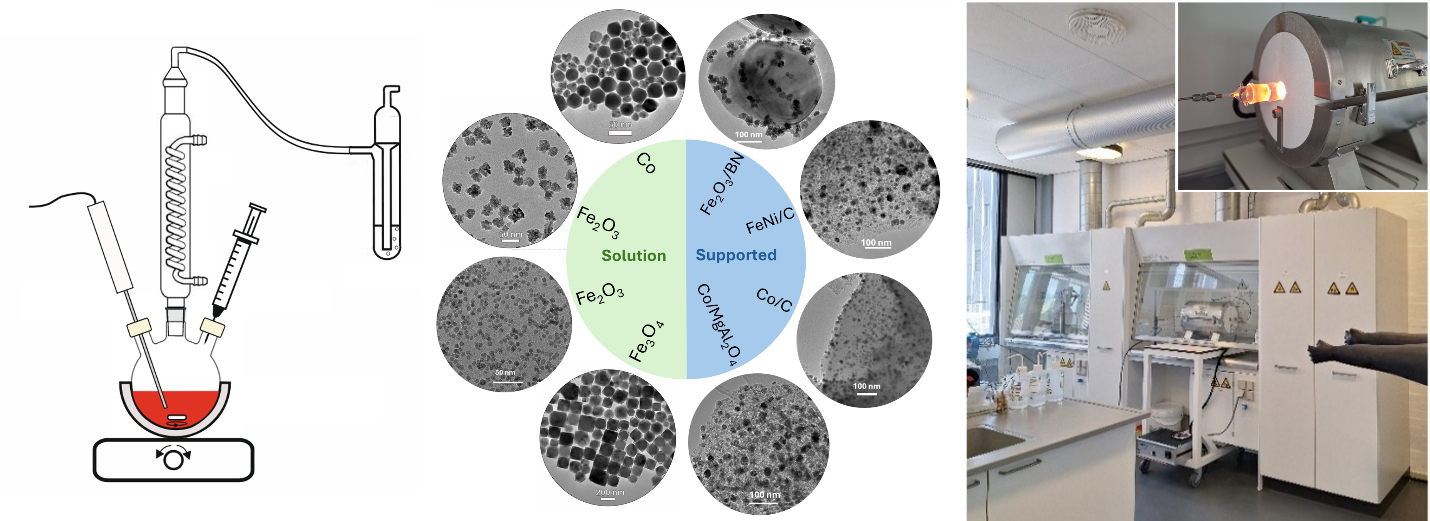In-house Laboratory

Synthesis of magnetic nanoparticles
We synthesize magnetic nanoparticles with different shapes, sizes, and compositions for fundamental studies and applications like hyperthermia, catalysis, and energy conversion. Our typical particles are made of Fe, Co, and Ni, and alloys or oxides thereof. Our synthesis methodologies include wet chemistry for the preparation of suspended nanoparticles and incipient wetness impregnation for the preparation of supported nanoparticles (see examples below). We also make composites, e.g. nanoparticles fixated in polymers, for applications such as high-frequency power electronics.


Single crystals
Our in-house x-ray Laue diffraction setup allows us to orient single-crystal samples in preparation for x-ray and neutron diffraction experiments at international large-scale facilities

Magnetometry
Our magnetometry activities focus on characterizing and testing the magnetic samples with static fields up to 2 T, high-frequency fields up to 1 MHz and 130 mT, temperatures from 80 K to 1273 K, and controlled gas environment. The laboratory features commercial instrumentation together with specialized equipment developed in-house, such as an in-situ vibrating sample magnetometer holder, which can characterize the magnetic properties of magnetic samples during a chemical reaction [2]. Recently, the lab has also developed an AC magnetometer to retrieve hysteresis curves at high frequencies (0.1-1 MHz), enabling better characterization for materials used for e.g. cancer treatment and catalytic process heating. The lab has also recently developed new measurements protocols for AC field calorimetry [3]. AC calorimetry is a method that estimates the heating power from the increase of temperature when applying an AC magnetic field. This is the primary method used today for characterizing the heating power of magnetic nanoparticles.

57Fe Mössbauer spectroscopy
Mössbauer spectroscopy measures the absorption of nuclear gamma rays from a radioactive source (here 57Co/57Fe). The energy is doppler shifted slightly by moving the source with mm/s relative to the sample. The method is highly sensitive to the chemical environment and magnetic order of the sample due to the hyperfine interaction. We are able to perform spectroscopy at room temperature down to cryogenic temperatures of 20 K, but equipment is being installed that will enable us to achieve a temperature of 4 K in applied fields of 5 T.
References:
[1] E. Brok et al., Crystals (2017): https://doi.org/10.3390/cryst7080248
[2] M. R. Almind et al., Rev. Sci. Instrum. (2023): https://doi.org/10.1063/5.0113493
[3] L. G. Hanson et al., IEEE Magnetics Letters (2023): https://doi.org/10.1109/LMAG.2023.3279778
Contact
Cathrine Frandsen Professor, Head of Section fraca@fysik.dtu.dk
Miriam Varón Research engineer mirva@fysik.dtu.dk